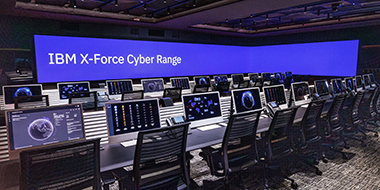Retail
Hyper-localised retail: Stay relevant with local data
23 May, 2019 | Written by: Vivian Braun and Elena Ghit
Categorized: Retail
Share this post:
Originally published in Essential Retail.
Modern consumers have drastically changed the retailing landscape as their expectations can be instantly satisfied across multiple channels and locations. As a consequence, proximity and relevance are key to retailers seeking to keep their competitive edge and delight their shoppers through unique in-store experiences.
Retailers aim to achieve efficiency and grow their operational scale which often results in sacrificing customer intimacy. Traditional local proprietors were successfully making business decisions based on their knowledge of the neighborhood habits and preferences.
However, today’s large-scale enterprises are likely failing to reflect local differences because they base their decisions on averages and aggregate historical data. Today’s stores may remain with huge stocks of slow-moving products that are not properly exposed, thus giving customers a hard time to find what they are looking for.
Let’s consider how to translate this observation into sales. Intuitively, failing to understand and address local demand may cause significant loses to stores. This intuition is confirmed by a report presented in 2015 when retailers lost $1.75 trillion to out-of-stocks, overstocks, and returns. Similarly, a more recent study on demand and assortment planning conducted by Forrester, commissioned by IBM, shows that in 2018 only 37% of the firms have the ability to forecast demand at the store SKU level. The same report argues that 77% of the retail and CPG firms are starting to use predictive analytics, but they still experience high levels of out-of-stocks or mark-down rates. Such performance metrics highlight the need for hyper-local planning which is a new powerful tool for extracting deep insights. These insights are further used by core business processes in highly relevant ways with a focus on customer loyalty and advocacy.
Understanding the local demand patterns requires tapping into the neighbourhood characteristics of the store and other factors outside retailers’ control such as events and weather. Therefore, neighbourhoods may be very different, and so treating all stores in a similar way is counter-intuitive. With hyper-local insights, businesses can replicate the traditional proprietor’s intuitive process by analysing multiple data sources and turning them into actionable insights that can be deployed at scale. Hyper-local retailing is an innovative tool of providing customer tailored neighbourhood experiences to improve advocacy. With such a technology, retailers are now able to improve the model assortment on the shelf in specific neighbourhoods, to stock stores accordingly for local promotional activities, to understand how local events may impact the brand performance, or to find the best location in a given area for a new storefront.
To deliver a view of the neighbourhood characteristics on a street-by-street basis retailers may combine the store’s abundant and hyper-localised information with unique, predictive analytics models. The outcome can be further injected into the fiber of the store, thus immediately informing the retailer how to provision the shelves and the backroom.
Some retailers have started to acknowledge the importance of a hyper-local presence. Whether it is by adapting the product offering or the design, they understand the benefits of tailoring physical stores, products, and marketing to individual locations and neighbourhoods. Consumer preferences are changing across stores over time and retailers need to know how competing products are performing in the market. Such trends are beyond the hyper-localisation power. Rather than simply targeting customers based on who and where they are, today’s businesses must gather deep insights on how their consumers feel.
Imagine an AI driven system that can analyse the natural language text of online customer reviews and the images of all products in the market. Based on this analysis the system summarises key relationships between customer sentiment and product features that can instantly identify how to tailor the experiences to the customer’s feedback.
Visit our Store web page to learn more about staying relevant with local data.

Marketing Leader, Vodafone/IBM Venture

WW Content Manager, IBM MetroPulse
Achieving sustainability ambitions with IBM AI technology
I recently attended The Economist Sustainability Week where I had some interesting conversations with other Heads of Sustainability. The one common thread was the belief that there’s never been a more pressing time for urgent, effective action to achieve our sustainability ambitions. We are at a critical juncture. Stakeholders are demanding a greater commitment to […]
Streamlining Life Sciences Research: Simplifying Data Access with Design Principles
Life Sciences research and development is complicated: complex tasks are carried out in an environment of big data, specialised technology and regulated processes. The challenges of this complexity risks making processes and interactions iterative, slow and expensive. To accelerate innovation in the development of safe and effective treatments, Life Sciences organisations need to cut through these challenges […]
Outsmarting the Digital Rogues: Celerity’s Journey to SOC Modernization
Remember SolarWinds? The software update that delivered malware to thousands? Imagine a legacy security system, slow and reliant on signatures, like a grumpy old guard dog. It barks at familiar threats, but this wolf in sheep’s clothing (the update) slipped right by. Hackers lurked undetected for months, finally wreaking havoc. Legacy defences? Powerless. Moral of […]

